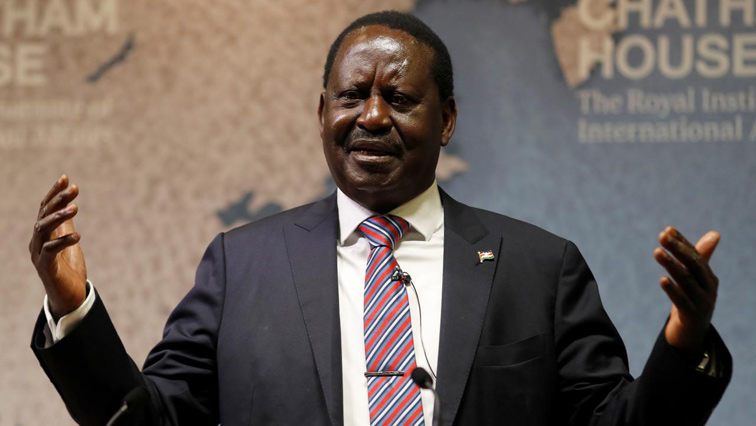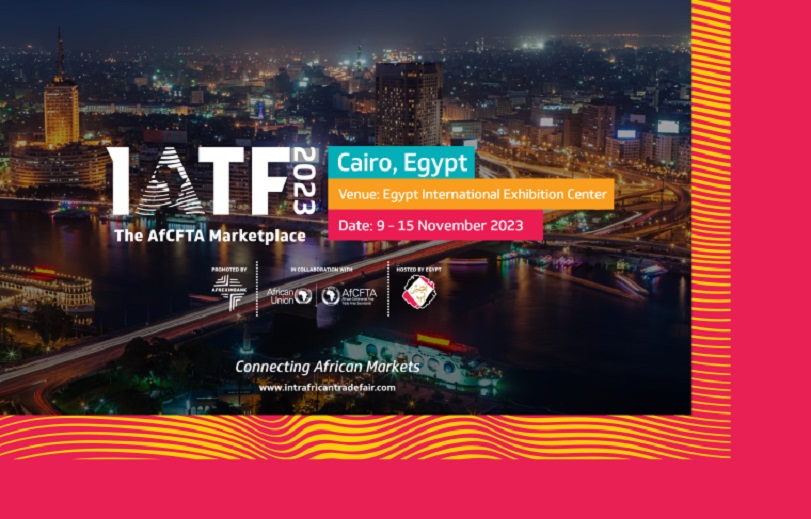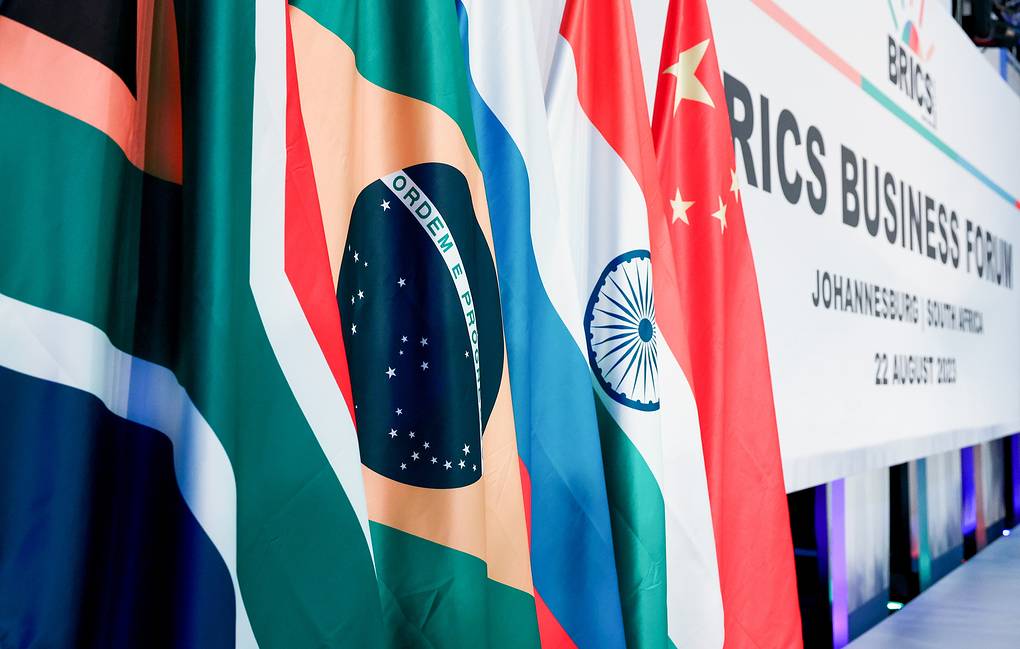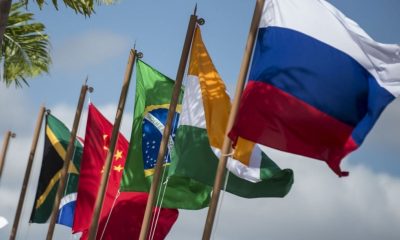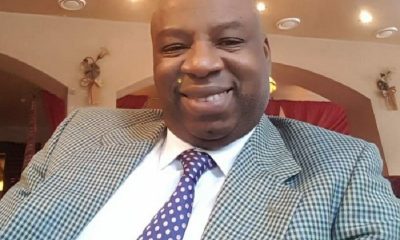World
Ethiopia, Egypt and South Africa: Pursuing Relationships Within and Beyond BRICS
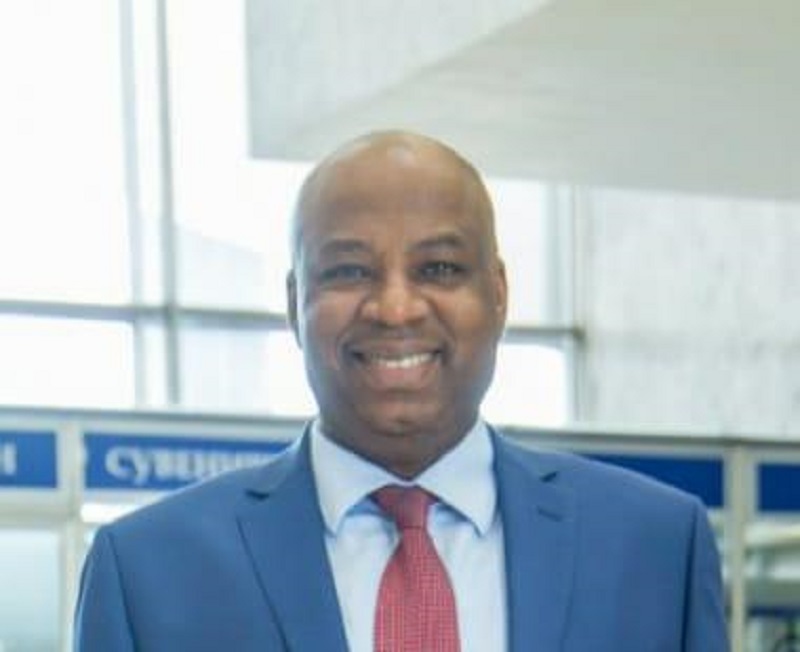
By Professor Maurice Okoli
Introduction
Ultimately, BRICS (Brazil, Russia, India, China and South Africa) has established itself as an informal association pursuing comprehensive and multi-dimensional cooperation. It has also, in the course of its operations, created a platform for discussing important topics relating to economic growth, developing trade and economic exchanges, ensuring security as well as promoting education and culture. According to several previous summit reports, the economic power is shifting from the West to the Global South. One of the landmarked achievements was the ascension of three African countries: Ethiopia and Egypt (Jan. 2024) and South Africa (2010). Russia is chairing the association this year. The main event of 2024 for BRICS will be the summit, which will be held in Kazan in October.
Under Russia’s chairmanship, integrating more new members into BRICS has been suspended, although the ‘strategic expansion’ was considered an explicit testament to the association’s remarkable growing attraction and its commitment to reshaping the global economic landscape.
While the geopolitics intensifies, BRICS has prioritized the economic dimension of its operations, desirous to design the necessary instruments for substituting those of multinational organizations such International Monetary Fund (IMF) and the World Bank. Closely related to this are the loans for investment projects and the financial payment systems. The analysis here, thus focuses on the economic architecture of Ethiopia, Egypt and South Africa – African members of BRICS.
BRICS Bank
Regarding the broader historical significance of this association, the founding members consisting of Brazil, Russia, India, and China held the first summit in Yekaterinburg in 2009, with South Africa joining it a year later, discussed creating the BRICS bank as a geopolitical ‘alternative’ to IMF and the World Bank. The summit documents contained explanatory reasons as ‘operating financial activities mainly based on non-interference, equality, and mutual benefit’ among members and other developing countries. They planned to set up this New Development Bank by 2014 but was later established in 2015.
The financial architecture of BRICS is made of the New Development Bank (NDB) and the Contingent Reserve Arrangement (CRA). These components were signed into a treaty in 2014 and became active in 2015. (See its report April 2024). New Development Bank, sometimes referred to as the BRICS Development Bank, by definition is ‘a multilateral development bank’ operated by the five BRICS states. In 2021, Bangladesh, Egypt, the United Arab Emirates and Uruguay joined the NDB. The bank’s primary focus of lending is infrastructure projects with authorized lending of up to $34 billion annually. As of 2023, it had 53 projects worth around $15 billion. Its plan on giving out $15 billion to member states to help their struggling economies never materialized.
Financial Commitments
The core question was the initial financial shareholding. In July 2014, during the sixth BRICS summit in Fortaleza, the BRICS signed the document to create $100 billion as the startup capital and the currency pool for the bank. China committed $41 billion towards the pool; Brazil, India, and Russia $18 billion each; and South Africa $5 billion. China, which held the world’s largest foreign exchange reserves and contributed the bulk of the currency pool, wanted a more significant managing role. China also wanted to be the location of the reserve, thus making the bank to be headquartered in Shanghai, China. Until 2024, it has a skeleton office in Moscow, Russia, and Johannesburg, South Africa, as compared to many representative offices and normal-size staff of IMF and World Bank across Africa.
BRICS payment system
At the 2015 BRICS summit in Russia, ministers from the BRICS states initiated consultations for a payment system that would be an alternative to the SWIFT system. The stated goal was to initially move to settlements in national currencies. The Central Bank of Russia highlighted the main benefits as backup and redundancy in case there were disruptions to the SWIFT system. China also launched its alternative to SWIFT: the Cross-Border Interbank Payment System, which enables financial institutions worldwide to send and receive information about financial transactions. India also has its alternative Structured Financial Messaging System (SFMS), as do Russia SPFS and Brazil Pix, (according to the BRICS report July 2024).
Ethiopia, Egypt and South Africa’s Demography
Ethiopia: With Ethiopia and Egypt taking full membership with effect on 1 January 2024, joining South Africa illustrated BRICS expansion from the Maghreb through East Africa down to Southern Africa. South Africa and Egypt are the economic powerhouses, while Ethiopia ranks 8th position in the continent. Angola and Nigeria rank above Ethiopia. With about 126.5 million people (2023), Ethiopia is the second most populous nation in Africa after Nigeria (June 2024 stands at 229.6), and one of the fastest-growing economies in the region. Ethiopia aims to reach lower-middle-income status by 2025. Ethiopia holds the headquarters of the AU.
Egypt: Located in the topmost north Africa along the Mediterranean Sea, Egypt considers itself as part of the Arab world. The permanent headquarters of the Arab League are located in Cairo and the body’s secretary general has traditionally been an Egyptian. At approximately 100 million inhabitants, Egypt is the 14th-most populated country in the world, and the third-most populated in Africa. Egypt’s economy depends mainly on agriculture, petroleum exports, natural gas, and tourism. There are also more than three million Egyptians working abroad, mainly in Libya, Saudi Arabia, the Persian Gulf and Europe. Egypt is a member of the Association of Arab States and the African Union (AU).
South Africa: South Africa is the southernmost country on the African continent. Its remoteness—it lies thousands of miles distant from major African cities such as Lagos and Cairo and more than 6,000 miles (10,000 km) away from most of Europe, North America, and eastern Asia, where its major trading partners are located. According to the 2023 census, the population of South Africa was about 62 million people of diverse origins, cultures, languages, and religions. South Africa has a mixed economy, emerging market, and upper-middle-income economy, one of only eight such countries in Africa. the country has a comparative advantage in the production of agriculture, mining and manufacturing products relating to these sectors. Several reports indicate that, in principle, its principal international trading partners—besides other African countries—include Germany, the United States, China, Japan, the United Kingdom, Bangladesh and Spain. Over the last few decades, South Africa has also established itself as a popular tourist destination. Further, it is among the G20, and is the only African country that is a permanent member of the G20 group, and as a member of the Southern African Development Community (SADC) and the African Union (AU).
Development Challenges
- Ethiopia’s relations with neighbours are very complicated, and also it suffers from natural disasters. Russia tended to make a greater impact when it offered sympathy and support with humanitarian aid of grains to the affected and impoverished communities in Ethiopia. In November and December 2023, Russia delivered these grains, as humanitarian aid, to Ethiopia alongside Zimbabwe, Kenya, Burkina Faso and Mali. More are still vulnerable to natural and conflict disasters at the present stage.
According to the World Bank report (2023), Ethiopia seeks to chart a development path that is sustainable and inclusive to accelerate poverty reduction and boost shared prosperity. Achieving these objectives will require addressing key challenges including the following:
(i) addressing macroeconomic private sector development, structural transformation, and generation of jobs,
(ii) reducing the incidence of conflict that has been having a substantial impact on lives, livelihoods, and infrastructure. Overcoming the effects of the coronavirus pandemic.
(iii) addressing food insecurity, which is growing due to adverse weather events, locust invasion, conflict, and global conditions leading to high inflation of food prices.
(iv) improving human capital which is far lower than the average for the Sub-Saharan Africa region.
(v) generating good jobs. The country’s growing workforce (with roughly 2 million persons reaching working age per year) puts pressure on the absorption capacity of the labour market and necessitates improving current jobs while creating sufficient new jobs.
- Despite its profound geopolitical and multifaceted relations with key external powers, its membership in G20 and BRICS, South Africa’s greatest challenge is huge energy deficits. After years of sub-standard maintenance and the South African government’s inability to manage strategic resources, the state-owned power supplier Eskom has been experiencing a deficiency in capacity to supply sufficient power nationwide. Industrial production is, to a large extent, negatively affected by these energy setbacks.
- In the case of Egypt as a member of BRICS, it has external players such as the United States, China, Turkey, and the United Arab Emirates. Since taking over political power, Abdel Fattah El-Sisi has been strengthening the military and limiting the political opposition. Under El-Sisi, Egypt, the Egyptian economy entered an ongoing crisis, the Egyptian pound was one of the worst-performing currencies, and inflation reached nearly 40% in March 2024. It has received United States foreign aid over the past few years (an average of $2.2 billion per year) and is the third-largest recipient of such funds from the United States.
In its annual report (2024), the International Monetary Fund (IMF) has rated Egypt as one of the top countries in Africa undertaking economic reforms. But a lot more economic lapses have still engulfed the economy, and a greater part of the population lives below the average subsistence level. An estimated 2.7 million Egyptians abroad contribute actively to the development of their country through remittances ($7.8 billion in 2021), as well as circulation of human and social capital and investment. Remittances, money earned by Egyptians living abroad and sent home, reached a record $21 billion in 2023, according to the World Bank.
Brazilian Dilma Rousseff and BRICS Bank
During the latest meeting held on June 6, 2024, President Vladimir Putin and President of the BRICS New Development Bank, Dilma Rousseff, agreed on some important issues. These include the fact that the bank becomes more sustainable and operational and operates within developing multipolar economic architecture and strengthening its economic base. In 2024, Russia presides over BRICS, Russia and Brazil are co-founders of this bank, now headed by Dilma Rousseff. In the new emerging multipolar world, BRICS members and other developing countries, especially those in the Global South have consistently criticized the IMF and the World Bank and further called for reforms. Nevertheless, Putin and Rousseff have taken the common position that the BRICS bank has an essential role to play in the multipolar economy. Of course, the multipolar world is also reflected in national currencies, which is another obligation of the bank: to attract and carry out settlements in national currencies. This is very important for developing countries that do not have strong currencies and suffer greatly from exchange rate volatility. (See Kremlin report – June 6, 2024).
Obviously, the BRICS bank claims to be working independently without any political strings. In the current conditions, it is not easy to do so, given the developments in global finance and the use of the dollar as a political weapon. Now the world is indeed going through many challenges. There are crisis trends and inflation in advanced countries, and in the developing world, nations are facing debt problems. Of course, the countries in the developing world are now primarily in serious condition. According to Rousseff remarks: “The bank should play a major role in the development of a multipolar, polycentric world. Russia is a very important partner in BRICS and the New Development Bank and is fulfilling all of its commitments. And, indeed, the bank is facing many problems, primarily concerning liquidity.” (See Kremlin report – July 26, 2023).
The Kremlin website quoted Putin as follows: “Our development strategy for the 2022–2026 period aims to draw about 30 per cent of our funds from domestic markets. It is also very important to attract funds in different currencies, not just dollars or euros. We are well aware of the difficulties encountered by the developing nations in their bid to attract investment. They need resources to finance infrastructure projects, develop digital and social logistics, and, of course, reach their goals in environmental protection. Everyone is focused on their debt, ignoring their need for resources. It seems unacceptable to impose certain terms and requirements on them in exchange for funding like multilateral international organisations are doing now.” (See Kremlin report – July 26, 2023).
On November 14, 2019, Putin and other BRICS leaders met with members of the BRICS Business Council and the management of the New Development Bank. Approval was given for internal procedures to launch a technical support foundation aimed at helping entrepreneurs draft high-quality design documents when applying for a bank loan. That year (2019) saw an increase in the number of regional branches of the bank. The African Regional Centre in Johannesburg. A bank branch in Latin America was launched in Brazil. And the necessary procedures for the opening of the bank’s Moscow office in the first half of 2020.
It was acknowledged that the bank, as a key international financial institution, is efficient in investment and lending, and expanded its investment project portfolio which rose, and exceeded $12 billion, with seven of 44 approved projects being implemented in Russia. The bank also supported the ‘Strategy for BRICS Economic Partnership’ until 2025, which was adopted at its summit in Russia in 2015. (See BRICS report – November 2019).
BRICS Bank and other Multinationals (IMF and World Bank)
The basic question currently asked is what place does BRICS bank holds in the global economy, and how comparable to other multinational financial institutions. Overcoming the impact of the global crisis, the BRICS bank has to follow the same path of comprehensive renovation. It has made its key tasks including investing in the economy through concessional loans, to achieve alleviating poverty and hardships to sustainable economic growth. The bank’s documents show interest in engaging in traditional sectors such as alternative energy, information, telecommunications and new medical technologies, processing of mineral resources and working towards agricultural production growth. Many of such advantageous sectors have attracted some forms of loans from the BRICS bank since its establishment and have also recorded some successes and achievements.
For this article, traditional comparisons are necessary to deepen the understanding of the theme under discussion and analysis. Historically the IMF and the World Bank, in their functional pursuits, have been extremely active with their targeted operations in various geographical regions. Despite the current criticisms and demands for reforms and a review of their approach, the IMF and the World Bank have introduced a new system of global economic governance in their operations. Thanks to a common approach which is noticeable until today the IMF and the World Bank are consistently in favour of financing operations in emerging and developing economies. At the Pittsburgh G-20 summit held in 2009, both financial institutions pledged forms of support for economic growth in developing countries. (See IMF and World Report, June 2009)
Ethiopia, Egypt and South Africa (BRICS members) constitute part of developing countries and distinctively are located in Africa. Today these three countries are reputable members of the BRICS informal association, but at the same time entangled in the financial network of the IMF and the World Bank. An official summarized report indicated that the IMF, in June 2023, concluded the Article IV consultation with South Africa. South Africa’s economy is facing mounting economic and social challenges. The pathway out to contain the economic shortfall and, as it was an election period, was to swiftly address economic complexity as the last resort was to approach the World and IMF for another packet of loans. Before that, a $4.3 billion loan, at about 1.1% interest, was granted to South Africa to manage the immediate consequences of the fallout from the coronavirus pandemic which broke out in 2019. The practical benefit is that the IMF loan played a supportive role in stabilizing South Africa’s situation. South Africa is still facing multiple economic bottlenecks, a deteriorating situation, and worse, it will struggle to pay back its debts to foreign financial institutions. South Africa’s external debt reached over $170 billion in 2021, which is the highest stock of foreign debt in Sub-Saharan Africa.
Egypt’s current situation is not different from South Africa and Ethiopia. The North African country has been addressing its economic development capitalizing on the contradictions in the global system. In 2021, Egypt’s total external debt reached around $143 billion. The latest development, in July 2024, the IMF and Egypt reached a preliminary agreement that should help unlock the next disbursement of a $8 billion loan.
As part of Ethiopia’s macroeconomic reform program endorsement, the latest IMF update released in August 2024, foreign creditors have granted financing assurances to Ethiopia enabling the government to fast-track approval of new loans by the IMF and the World Bank. An official creditor committee offered firm assurances to restructure loans and outstanding debts. Reports explicitly show that Italy, Japan, India, and Saudi Arabia are among the other members of the committee. Ethiopia aims to restructure billions of dollars in external debt using the Group of 20’s Common Framework mechanism, which seeks to coordinate talks between official, commercial and private creditors. Ethiopian Prime Minister Abiy Ahmed told parliament in July 2024 that expected talks with the Washington-based IMF and World Bank could unlock more than $10 billion in financing in the coming years.
Further analysing several reports, Egypt and South Africa, being BRICS members in addition to Ethiopia, have contracted loans for developing their economies. The most difficult tasks include their demands for financial reforms, restructuring existing debts and at the same time contracting new loans from these Western multinational financial institutions. These are the realistic scenarios with Ethiopia, Egypt and South Africa, primarily due to the incapacity and tardiness of the New Development Bank established by BRICS. With its particular bilateral interest, aspirations and perspectives, China’s Export-Import Bank, as one of the policy instruments, over the past two decades, has supported several development initiatives across Africa. At least, China has illustrated its financial strength, ensuring and reshaping Africa’s economic future. Imperatively, China’s position is that developing the economy and engaging in economic sectors as an important aspect of improving the lives of the impoverished, is partly the surest way to ensure peace and order in Africa.
Notwithstanding all the distinctive points discussed above, the BRICS bank considers Ethiopia, Egypt, South Africa, and other partners with their support for a multipolar world, beginning to create a solid foundation for dialogue, to actively cooperate and collaborate in the economic sphere. The bank operators, however, declared confidence that cooperation, as frequently put “reliable and mutually beneficial partnership relations” would benefit the developing countries and their peoples, – and among BRICS members has a great future. Against this backdrop, the BRICS New Development Bank has to re-prioritize its high-impact operations that are connected to the development objectives of its members and consistent commitments under the Sustainable Development Goals (SDGs). In addition, it has to facilitate a deeper understanding and forge partnerships focusing on mobilising resources for infrastructure and sustainable development projects in its member countries, and to strengthen South-South cooperation.
Some experts further say BRICS ‘strategic expansion’ will raise significantly its status and could amplify the association’s declared ambitions to become a champion of the Global South. According to historical records, the first meeting of the association began in St. Petersburg in 2005. It was called RIC, which stood for Russia, India and China. Then, the BRIC group was formed by four of the world’s fastest-growing economies – Brazil, Russia, India, and China. In December 2010, South Africa joined the BRIC association, now referred to as BRICS, ‘an informal association’ of five countries: Brazil, Russia, India, China, and South Africa.
*Professor Maurice Okoli is a fellow at the Institute for African Studies and the Institute of World Economy and International Relations, Russian Academy of Sciences. He is also a fellow at the North-Eastern Federal University of Russia. He is an expert at the Roscongress Foundation and the Valdai Discussion Club. As an academic researcher and economist with a keen interest in current geopolitical changes and the emerging world order, Maurice Okoli frequently contributes articles for publication in reputable media portals on different aspects of the interconnection between developing and developed countries, particularly in Asia, Africa and Europe. With comments and suggestions, he can be reached via email: [email protected].
World
Comviva Wins at IBSi Global FinTech Innovation Award
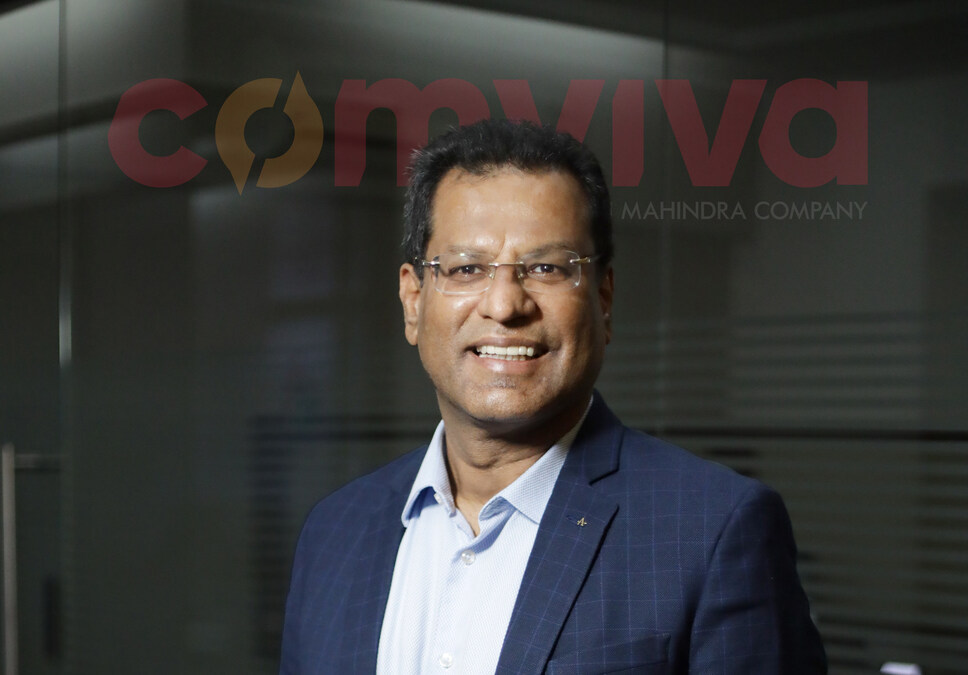
By Modupe Gbadeyanka
For transforming cross-border payments through its deployment with Global Money Exchange, Comviva has been named Best In-Class Cross Border Payments.
The global leader in digital transformation solutions clinched this latest accolade at the IBS Intelligence Global FinTech Innovation Award 2025.
The recognition highlights how Comviva’s mobiquity Pay is helping shape a modern cross-border payment ecosystem that stretches far beyond conventional remittance services.
Deployed as a white label Wallet Platform and launched as Global Pay Oman App, it fulfils GMEC’s dual vision—positioning itself as an innovative payment service provider while digitally extending its core money transfer business.
The solution allows GMEC to offer international money transfers alongside seamless forex ordering and other services. These capabilities sit alongside a broad suite of everyday financial services, including bill and utility payments, merchant transactions, education-related payments, and other digital conveniences — all delivered through one unified experience.
“This award is a testament to Oman’s accelerating digital transformation and our commitment to reshaping how cross-border payments serve people and businesses across the Sultanate.
“By partnering with Comviva and bringing the Global Pay Oman Super App, we have moved beyond traditional remittance services to create a truly inclusive and future-ready financial ecosystem.
“This innovation is not only enhancing convenience and transparency for our customers but is also supporting Oman’s broader vision of building a digitally empowered economy,” the Managing Director at Global Money Exchange, Subromoniyan K.S, said.
Also commenting, the chief executive of Comviva, Mr Rajesh Chandiramani, said, “Cross-border payments are becoming a daily necessity, not a niche service, particularly for migrant and trade-linked economies.
“This recognition from IBS Intelligence validates our focus on building payment platforms that combine global reach with local relevance, operational resilience and a strong user experience. The deployment with Global Money Exchange Co. demonstrates how mobiquity® Pay enables financial institutions to move beyond remittances and deliver integrated digital services at scale.”
“The deployment of mobiquity Pay for GMEC showcases how scalable, API-driven digital wallet platforms can transform cross-border payments into seamless, value-rich experiences.
“By integrating remittances, bill payments, forex services, and AI-powered engagement into a unified Super App, Comviva has reimagined customer journeys and operational agility.
“This Best-in-Class Cross-border Payments award win stands as a testament to Comviva’s excellence in enabling financial institutions to compete and grow in a digitally convergent world,” the Director for Research and Digital Properties at IBS Intelligence, Nikhil Gokhale, said.
World
Russia Renews Africa’s Strategic Action Plan
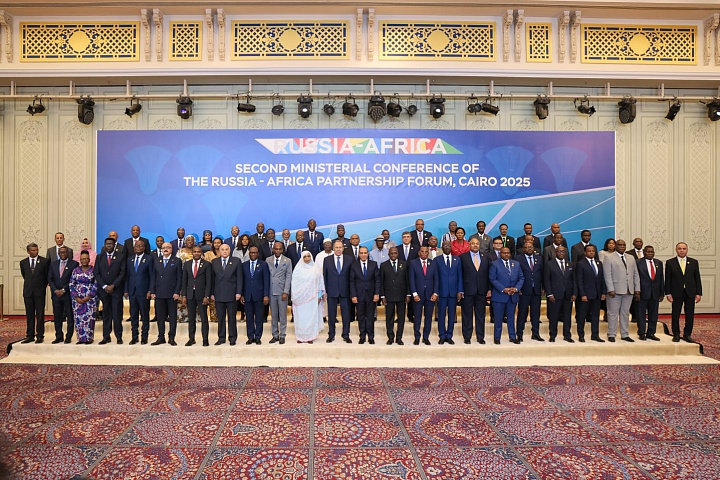
By Kestér Kenn Klomegâh
At the end of an extensive consultation with African foreign ministers, Russian Foreign Minister, Sergey Lavrov, has emphasized that Moscow would advance its economic engagement across Africa, admittedly outlining obstacles delaying the prompt implementation of several initiatives set forth in Strategic Action Plan (2023-2026) approved in St. Petersburg during the Russia-Africa Summit.
The second Ministerial Conference, by the Russian Foreign Ministry with support from Roscongress Foundation and the Arab Republic of Egypt, marked an important milestone towards raising bilateral investment and economic cooperation.
In Cairo, the capital city of the Arab Republic of Egypt, Lavrov read out the final resolution script, in a full-packed conference hall, and voiced strong confidence that Moscow would achieve its strategic economic goals with Africa, with support from the African Union (AU) and other Regional Economic blocs in the subsequent years. Despite the complexities posed by the Russia-Ukraine crisis, combined with geopolitical conditions inside the African continent, Moscow however reiterated its position to take serious steps in finding pragmatic prospects for mutual cooperation and improve multifaceted relations with Africa, distinctively in the different sectors: in trade, economic and investment spheres, education and culture, humanitarian and other promising areas.
The main event was the plenary session co-chaired by Russian Foreign Minister Sergey Lavrov and Egyptian Minister of Foreign Affairs, Emigration, and Egyptians Abroad Bashar Abdelathi. Welcome messages from Russian President Vladimir Putin and Egyptian President Abdelhak Sisi were read.
And broadly, the meeting participants compared notes on the most pressing issues on the international and Russian-African agendas, with a focus on the full implementation of the Russia-Africa Partnership Forum Action Plan for 2023-2026, approved at the second Russia-Africa Summit in St. Petersburg in 2023.
In addition, on the sidelines of the conference, Lavrov held talks with his African counterparts, and a number of bilateral documents were signed. A thematic event was held with the participation of Russian and African relevant agencies and organizations, aimed at unlocking the potential of trilateral Russia-Egypt-Africa cooperation in trade, economic, and educational spheres.
With changing times, Africa is rapidly becoming one of the key centers of a multipolar world order. It is experiencing a second awakening. Following their long-ago political independence, African countries are increasingly insisting on respect for their sovereignty and their right to independently manage their resources and destiny. Based on these conditions, it was concluded that Moscow begins an effective and comprehensive work on preparing a new three-year Cooperation and Joint Action Plan between Russia and Africa.
Moreover, these important areas of joint practical work are already detailed in the Joint Statement, which was unanimously approved and will serve as an important guideline for future work. According to reports, the Joint Statement reflects the progress of discussions on international and regional issues, as well as matters of global significance.
Following the conference, the Joint Statement adopted reflects shared approaches to addressing challenges and a mutual commitment to strengthening multifaceted cooperation with a view to ensuring high-quality preparation for the third Russia-Africa Summit in 2026.
On December 19-20, the Second Ministerial Conference of the Russia-Africa Partnership Forum was held in Cairo, Egypt. It was held for the first time on the African continent, attended by heads and representatives of the foreign policy ministries of 52 African states and the executive bodies of eight regional integration associations.
World
TikTok Signs Deal to Avoid US Ban
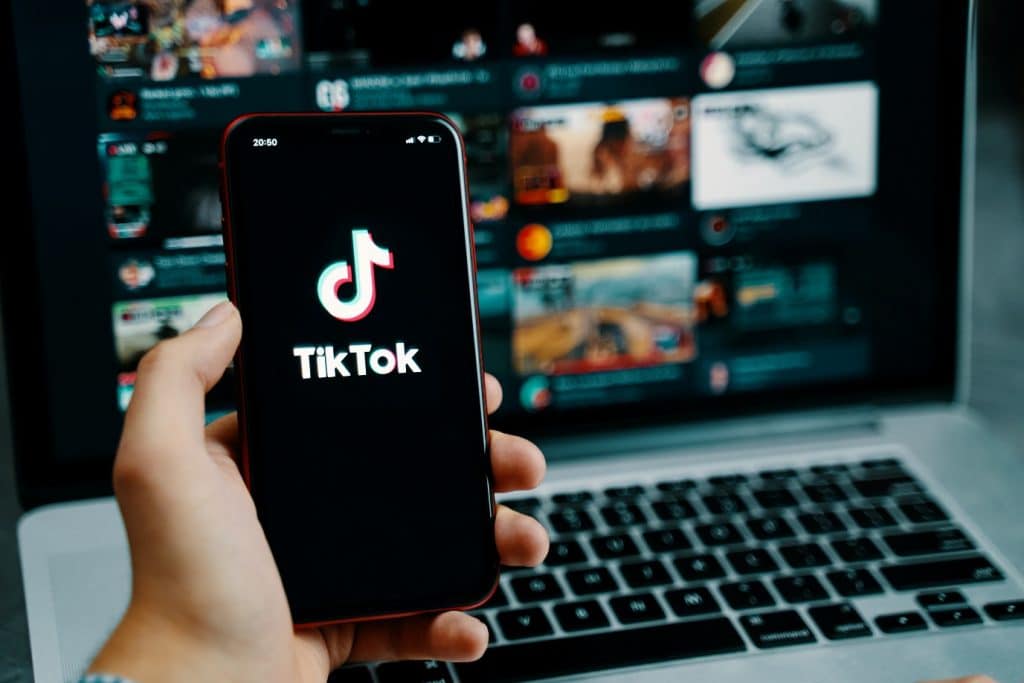
By Adedapo Adesanya
Social media platform, TikTok’s Chinese owner ByteDance has signed binding agreements with United States and global investors to operate its business in America.
Half of the joint venture will be owned by a group of investors, including Oracle, Silver Lake and the Emirati investment firm MGX, according to a memo sent by chief executive, Mr Shou Zi Chew.
The deal, which is set to close on January 22, 2026 would end years of efforts by the US government to force ByteDance to sell its US operations over national security concerns.
It is in line with a deal unveiled in September, when US President Donald Trump delayed the enforcement of a law that would ban the app unless it was sold.
In the memo, TikTok said the deal will enable “over 170 million Americans to continue discovering a world of endless possibilities as part of a vital global community”.
Under the agreement, ByteDance will retain 19.9 per cent of the business, while Oracle, Silver Lake and Abu Dhabi-based MGX will hold 15 per cent each.
Another 30.1 per cent will be held by affiliates of existing ByteDance investors, according to the memo.
The White House previously said that Oracle, which was co-founded by President Trump’s supporter Larry Ellison, will license TikTok’s recommendation algorithm as part of the deal.
The deal comes after a series of delays.
Business Post reported in April 2024 that the administration of President Joe Biden passed a law to ban the app over national security concerns, unless it was sold.
The law was set to go into effect on January 20, 2025 but was pushed back multiple times by President Trump, while his administration worked out a deal to transfer ownership.
President Trump said in September that he had spoken on the phone to China’s President Xi Jinping, who he said had given the deal the go ahead.
The platform’s future remained unclear after the leaders met face to face in October.
The app’s fate was clouded by ongoing tensions between the two nations on trade and other matters.
-

 Feature/OPED6 years ago
Feature/OPED6 years agoDavos was Different this year
-
Travel/Tourism9 years ago
Lagos Seals Western Lodge Hotel In Ikorodu
-

 Showbiz3 years ago
Showbiz3 years agoEstranged Lover Releases Videos of Empress Njamah Bathing
-

 Banking8 years ago
Banking8 years agoSort Codes of GTBank Branches in Nigeria
-

 Economy3 years ago
Economy3 years agoSubsidy Removal: CNG at N130 Per Litre Cheaper Than Petrol—IPMAN
-

 Banking3 years ago
Banking3 years agoFirst Bank Announces Planned Downtime
-

 Banking3 years ago
Banking3 years agoSort Codes of UBA Branches in Nigeria
-

 Sports3 years ago
Sports3 years agoHighest Paid Nigerian Footballer – How Much Do Nigerian Footballers Earn



